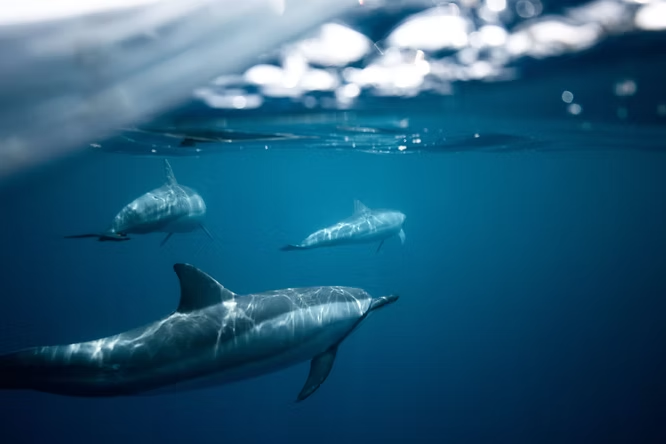Dolphins and Potential Self-Medication
Animals across the natural world often use plants or other organisms for medicinal purposes. Chimpanzees eat plants to remove parasites, wood ants incorporate resin to ward off pathogens, and capuchin monkeys rub millipede toxins into their fur to repel mosquitoes. Recent research suggests dolphins may also engage in a form of self-medication.
Observation of Behavior
Indo-Pacific bottlenose dolphins (Tursiops aduncus) have been observed repeatedly rubbing against specific corals and sea sponges. Study coauthor Angela Ziltener, who began observing the pod in 2009, noted that dolphins deliberately press their bellies, fins, and faces against gorgonian coral (Rumphella aggregate), leather coral (Sarcophyton), and sponges (Ircinia). The behavior occurs regardless of whether dolphins are alone or in the pod, often performed upon waking or before sleep.
Chemical Analysis of Coral and Sponge Secretions
Ziltener and colleagues conducted chemical analyses of mucus secreted by the corals and sponges. Using planar separation chromatography, study coauthor Gertrud Morlock identified 17 different metabolites with bioactive properties:
- Antibacterial compounds found in all three species
- Hormonal compounds detected in leather coral
- Novel metabolites previously unknown to science
These compounds could potentially affect skin conditions or infections, although direct evidence of benefits to dolphins is not yet available.
Learned Behavior and Cultural Transmission
The researchers observed that calves learn the behavior by mimicking older pod members. Young dolphins initially appear timid but gradually replicate rubbing corals and sponges, sometimes shaking sponges in their mouths to coat their faces. This suggests the behavior is culturally transmitted and learned rather than purely instinctive.
Alternative Explanations
While the self-medication hypothesis is plausible, other explanations exist:
- Scratching or relieving an itch
- Camouflaging appearance or odor
- Enjoyment of the tactile sensation, similar to human use of skin creams
Future Research Directions
Ziltener plans to continue observing the dolphins to understand sex or individual variation in this behavior. Experts like Jessica Abbott and Jaap de Roode suggest exploring whether dolphins elsewhere exhibit similar behaviors or if it is a localized cultural phenomenon. Additionally, the identified bioactive compounds could have potential clinical applications.
Conclusion
This research highlights the sophistication of dolphin behavior and provides compelling evidence of learned interaction with bioactive marine organisms. Even without conclusive proof of self-medication, the observations offer a rare glimpse into cultural transmission and the potential use of natural substances by marine mammals.

